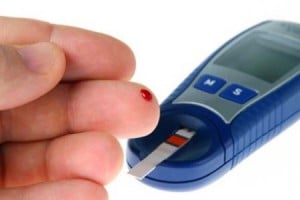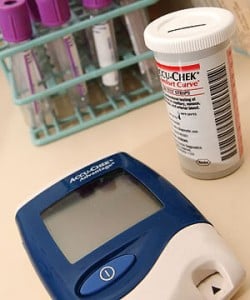A recent nationwide survey, the National Health and Morbidity Survey 2019, showed that nearly 1 in every 5 Malaysians live with diabetes [1]. Good blood glucose control is a central part of the treatment provided to people living with diabetes. With good blood glucose control, we can prevent serious health problems, permanent disability, suffering and untimely deaths in people with diabetes. Attaining this, may however, seem elusive. The road to good blood glucose control can pose burdens to both the healthcare provider and the patient with diabetes. Choice of Diabetes Therapy Depends on the Patient A challenge to managing diabetes includes optimising the use of current diabetes therapies. From the discovery of insulin in the 1920s, to the introduction of metformin and sulfonylureas in the 1950s [2], there are now more than 10 classes of pharmacological agents that can be used to manage diabetes [3]. Coupled with the fact that there is no one correct way to manage diabetes, healthcare providers sometimes struggle with making the best choice to optimise glucose control in their patients. Diabetes is a progressive condition and progressive treatment should follow.  “The choice of treatment depends on the patient we treat. Each medication to treat diabetes comes with its advantages and disadvantages. These pros and cons need to be weighed and matched to the individual patient’s clinical needs and risk profile,” says Prof Dato Dr Mafauzy Mohamed, a Senior Consultant Endocrinologist with Universiti Sains Malaysia and a teaching faculty with the Postgraduate Diploma in Diabetes Management and Education at International Medical University. At a recent webinar on optimising diabetes management, Prof Mafauzy updated the participants with the recommendations on use of glucose lowering medications in Type 2 Diabetes in the Standards of Medical Care in Diabetes 2020 by the American Diabetes Association. Lifestyle treatment and metformin use remain as first line therapy, after which the physician should assess if the patient is high-risk or has established Atherosclerotic Cardiovascular Disease, Chronic Kidney Disease or Heart Failure. For such patients, the type of medications used depend on the predominating risk. If the patient is not high-risk, the physician should consider if the compelling need is to minimise hypoglycaemia or minimise weight gain/promote weight loss. Some classes of medications have lower and some higher risk of hypoglycaemia, while some medications promote weight gain and some weight loss. As diabetes progresses, the person living with diabetes may find that use of oral medications can no longer help them manage their blood glucose. This is when the treatment plan can include the use of non-insulin injectables and/or insulin therapy.
“The choice of treatment depends on the patient we treat. Each medication to treat diabetes comes with its advantages and disadvantages. These pros and cons need to be weighed and matched to the individual patient’s clinical needs and risk profile,” says Prof Dato Dr Mafauzy Mohamed, a Senior Consultant Endocrinologist with Universiti Sains Malaysia and a teaching faculty with the Postgraduate Diploma in Diabetes Management and Education at International Medical University. At a recent webinar on optimising diabetes management, Prof Mafauzy updated the participants with the recommendations on use of glucose lowering medications in Type 2 Diabetes in the Standards of Medical Care in Diabetes 2020 by the American Diabetes Association. Lifestyle treatment and metformin use remain as first line therapy, after which the physician should assess if the patient is high-risk or has established Atherosclerotic Cardiovascular Disease, Chronic Kidney Disease or Heart Failure. For such patients, the type of medications used depend on the predominating risk. If the patient is not high-risk, the physician should consider if the compelling need is to minimise hypoglycaemia or minimise weight gain/promote weight loss. Some classes of medications have lower and some higher risk of hypoglycaemia, while some medications promote weight gain and some weight loss. As diabetes progresses, the person living with diabetes may find that use of oral medications can no longer help them manage their blood glucose. This is when the treatment plan can include the use of non-insulin injectables and/or insulin therapy.  For Malaysians, availability and cost of medications can be an issue. “Most of the newer classes of diabetes medications can be fairly expensive, and if this is a concern, an option is to use sulfonylurea and/or thiazolidinedione for the patient who is not high-risk,” advises Prof Mafauzy. Prof Mafauzy ended his sharing session by reinforcing that therapy provided to a person living with diabetes needs to be intensified over time to maintain blood glucose control as diabetes is a progressive condition. By weighing the pros and cons of each medication class and matching these medications to the patient’s needs, the healthcare provider can make an informed decision to individualise treatment for their patient living with diabetes. The Care Pathway is a Joint Journey between the Patient and the Healthcare Provider In the same webinar, Michelle Robins, a Credentialled Diabetes Educator with Northern Health, Australia and a teaching faculty with the Postgraduate Diploma in Diabetes Management and Education at International Medical University, shared that a person living with diabetes spends an average of 8,754 hours a year managing diabetes on their own. Robins adds that “In addition to helping patients achieve good blood glucose control, the goals of care should help patients prevent complications and optimise quality of life”. The care pathway is a journey that the healthcare provider takes with the patient and includes several stages that move from assessment of the patient’s key characteristics to a review and agreement between the patient and healthcare provider on the management plan. How then does a healthcare provider help people living with diabetes adopt self-management behaviours?
For Malaysians, availability and cost of medications can be an issue. “Most of the newer classes of diabetes medications can be fairly expensive, and if this is a concern, an option is to use sulfonylurea and/or thiazolidinedione for the patient who is not high-risk,” advises Prof Mafauzy. Prof Mafauzy ended his sharing session by reinforcing that therapy provided to a person living with diabetes needs to be intensified over time to maintain blood glucose control as diabetes is a progressive condition. By weighing the pros and cons of each medication class and matching these medications to the patient’s needs, the healthcare provider can make an informed decision to individualise treatment for their patient living with diabetes. The Care Pathway is a Joint Journey between the Patient and the Healthcare Provider In the same webinar, Michelle Robins, a Credentialled Diabetes Educator with Northern Health, Australia and a teaching faculty with the Postgraduate Diploma in Diabetes Management and Education at International Medical University, shared that a person living with diabetes spends an average of 8,754 hours a year managing diabetes on their own. Robins adds that “In addition to helping patients achieve good blood glucose control, the goals of care should help patients prevent complications and optimise quality of life”. The care pathway is a journey that the healthcare provider takes with the patient and includes several stages that move from assessment of the patient’s key characteristics to a review and agreement between the patient and healthcare provider on the management plan. How then does a healthcare provider help people living with diabetes adopt self-management behaviours?
| In answering this question, Robins shared 6 actions that healthcare providers can take towards this goal: | |
|---|---|
| Find the story | Most healthcare providers begin their consultation session by assessing patient history. An alternative start would be to have a conversation with the patient to understand how diabetes has affected his/her life and the life of loved ones. Understanding where the patient is on their diabetes journey can help healthcare providers individualise the education session. |
| Don’t make assumptions | Patients can be at different stages of behaviour change, with some who are more motivated than others to adopt self-care behaviours. |
| Practice person-centered care | There are 10 behaviours that the health-care provider can adopt towards person-centred care. Among these 10 behaviours, helpful pointers include being respectful to the patient, considering their experience and preferences, and communicating with both the patient and their caregiver. |
| Build SMARTER goals | Managing diabetes can involve many complex changes. Building your patient’s behaviour in a series of steps can be helpful. Many have heard of SMART goals, but a good approach to take is to build SMARTER goals with your patient. SMARTER is an acronym for Specific, Measurable, Actionable, Realistic, Time limited, Expect Problems, and Review and Reiterate. |
| Don’t tell the patient what to do, but why something is done | Patients are more likely to embrace a new behaviour if they know why they need to engage in that new behaviour. For example, instead of telling patients to store their insulin injections in the fridge, tell them why they need to store their insulin in the fridge. |
| Review your workplace support system | Successful patient outcomes depends on ongoing support. Reviewing the available resources at your workplace that supports diabetes self-management education (DSME) is one way to plan ongoing support for your patient living with diabetes. |
 For Malaysians living with diabetes, individualised support from their healthcare provider and diabetes educator can help them adopt self-care behaviours that improve blood glucose control and optimise quality of life. To view the full-webinar, visit: https://www.youtube.com/watch?v=0Xcgp4KW6N4 References:
For Malaysians living with diabetes, individualised support from their healthcare provider and diabetes educator can help them adopt self-care behaviours that improve blood glucose control and optimise quality of life. To view the full-webinar, visit: https://www.youtube.com/watch?v=0Xcgp4KW6N4 References:
- Institute for Public Health 2020. National Health and Morbidity Survey (NHMS) 2019: Non-communicable diseases, healthcare demand, and health literacy—Key Findings.
- White JR. A brief history of the development of diabetes medications. Diabetes Spectrum. 2014;27(2):82-86. doi: 10.2337/diaspect.27.2.82.
- Feingold KR. Oral and Injectable (Non-Insulin) Pharmacological Agents for Type 2 Diabetes. [Updated 2020 Jul 12]. In: Feingold KR, Anawalt B, Boyce A, et al., editors. Endotext [Internet]. South Dartmouth (MA): MDText.com, Inc.; 2000-. Available from: https://www.ncbi.nlm.nih.gov/books/NBK279141/









